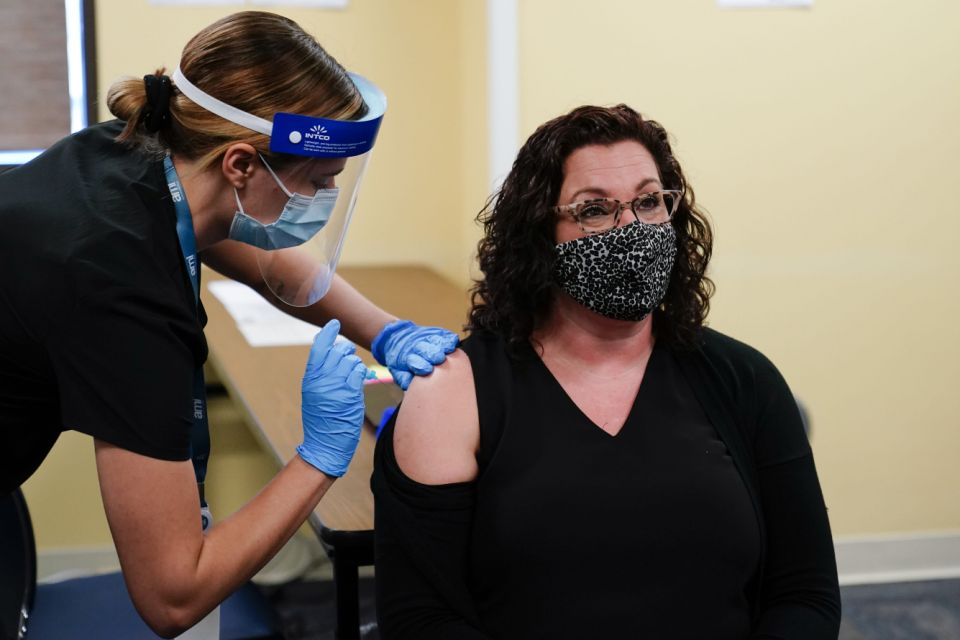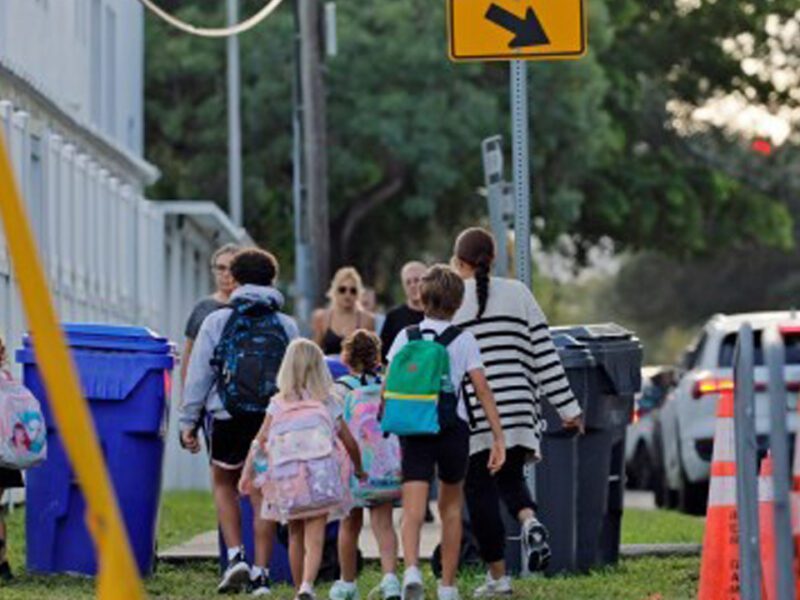Nearly 9 in 10 Teachers Willing to Work in Schools Once Vaccinated, Survey Finds
EducationWeek | Madeline Will | March 18, 2021
Nearly half of educators who belong to the nation’s largest teachers’ union have gotten at least one dose of the COVID-19 vaccine, and an additional 36 percent said they have scheduled, or intend to schedule, their vaccination.
Having a strong majority of educators vaccinated against the coronavirus would constitute a major milestone in the journey to reopening all school buildings for in-person learning. The new survey by the National Education Association also found that 87 percent of its members say they are willing to work in person if they are fully vaccinated.
“No one wants to return to in-person learning more than the educators who have dedicated their lives to helping their students succeed,” NEA President Becky Pringle said in a statement.
NEA surveyed 3,110 members between Feb. 26 and March 4. The union had last surveyed its members about the vaccine in February, when only 1 in 5 educators had gotten a COVID-19 shot.
Since then, President Joe Biden made teachers across the country eligible for the vaccine through a federal pharmacy program, and more states also began prioritizing educators through their own rollout plans. Montana is now the only state that has not made teachers as a group eligible or announced a date for them to become so, according to Education Week’s analysis, although teachers there can still get the vaccine through the federal program. (Florida and West Virginia are prioritizing teachers in only certain age groups through the state programs.)
The NEA survey found that the percentage of members who found it “very difficult” to get scheduled for vaccination declined from 46 percent to 34 percent.
Even so, racial inequities within the vaccine rollout persist. The survey found that 51 percent of white members and 49 percent of Hispanic members have been vaccinated, compared to 35 percent of Black members.
This gap is not unique to the teaching profession: Across the country, people of color are less likely to be vaccinated, even though Black and Hispanic Americans are more likely to die or be hospitalized from the coronavirus than white Americans. That’s due to a combination of reasons, including unequal access to health care, complicated vaccination booking systems that benefit those who have reliable internet access and time to search for appointments, and vaccine hesitancy. The United States has a history of racism in health care and medical abuse targeting people of color.
The NEA survey found that vaccine hesitancy is low among its members—just 11 percent said they will not be vaccinated and 3 percent said they aren’t sure. Still, it’s higher among Black members and Republicans: 20 percent of Black members and 29 percent of Republican members do not plan to get vaccinated.
Fifty-four percent of those hesitant to be vaccinated say it’s mainly because the vaccine is too new and they want to wait and see what happens.
Other safety measures are important to educators, too
Already, most school districts have resumed at least some in-person instruction. The NEA survey found that 76 percent of respondents’ schools have educators working in school buildings all or part of the time, up from 64 percent in February.
Some local and big-city teachers’ unions—including in Chicago, Pittsburgh, and Los Angeles—have fought to delay reopening school buildings until teachers are vaccinated. And some unions have said vaccinating teachers is not enough to make their members feel comfortable returning to school when COVID-19 cases in the community are high. Most students will probably not be vaccinated until next year.
“While the vaccinations will certainly make educators safer and better able to protect their students and loved ones, they are just one part of the solution,” Pringle said in the statement.
Vast majorities of educators said they favor safety measures like quarantine requirements for those who test positive for COVID-19, personal protective equipment for staff and students, daily sanitation of high-touch surfaces, and improved ventilation systems in schools.
Most educators whose schools are open for at least some in-person instruction say those protocols are in place—with one big exception. Only 28 percent of educators said their school has improved ventilation systems, although COVID-19 is an airborne virus. A government study released this summer found more than 41 percent of school districts need to update or replace the heating, ventilation, and air conditioning systems in at least half their schools.
Pringle pointed to the recent passage of the American Rescue Plan, which includes nearly $130 billion for elementary and secondary education, as an avenue for schools to implement safety measures, such as improved ventilation. Many of the Centers for Disease Control and Prevention’s recommendations to bolster ventilation in classrooms have costs that can quickly add up for schools, like $500 portable HEPA filters, although the CDC also said opening classroom windows is an effective way to improve ventilation.
The NEA survey also found that 90 percent of educators think it’s important for schools to enforce 6 feet of distancing in classrooms, cafeterias, and on school buses. However, the CDC is reconsidering that guideline in response to new research that has found that spacing students 3 feet apart may be sufficient to prevent COVID-19 outbreaks when other mitigation measures, like universal mask-wearing, are in place.






